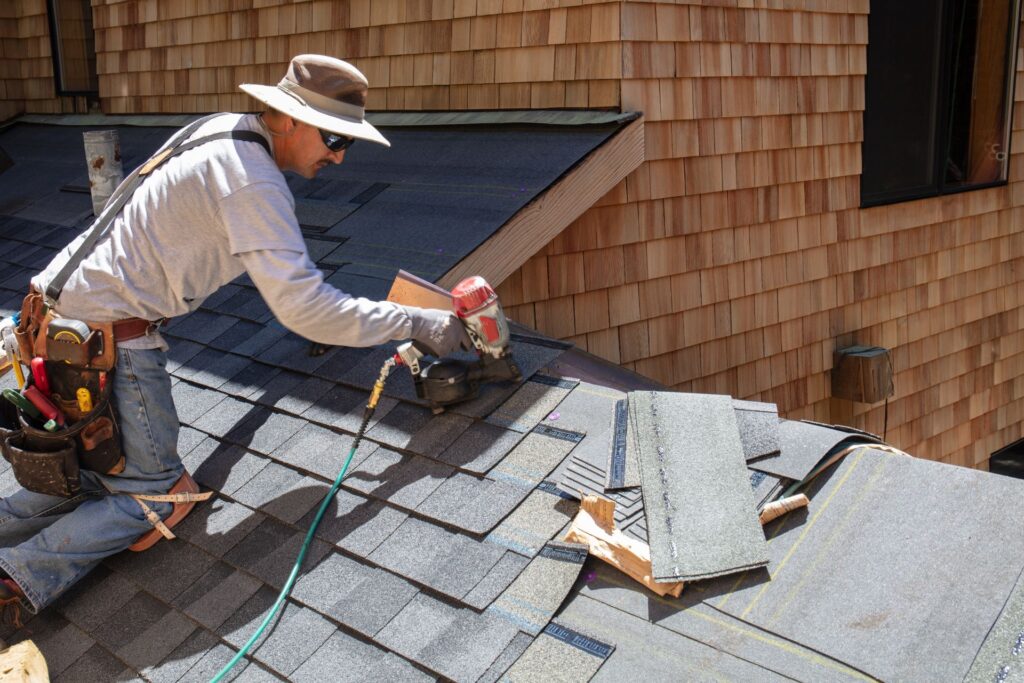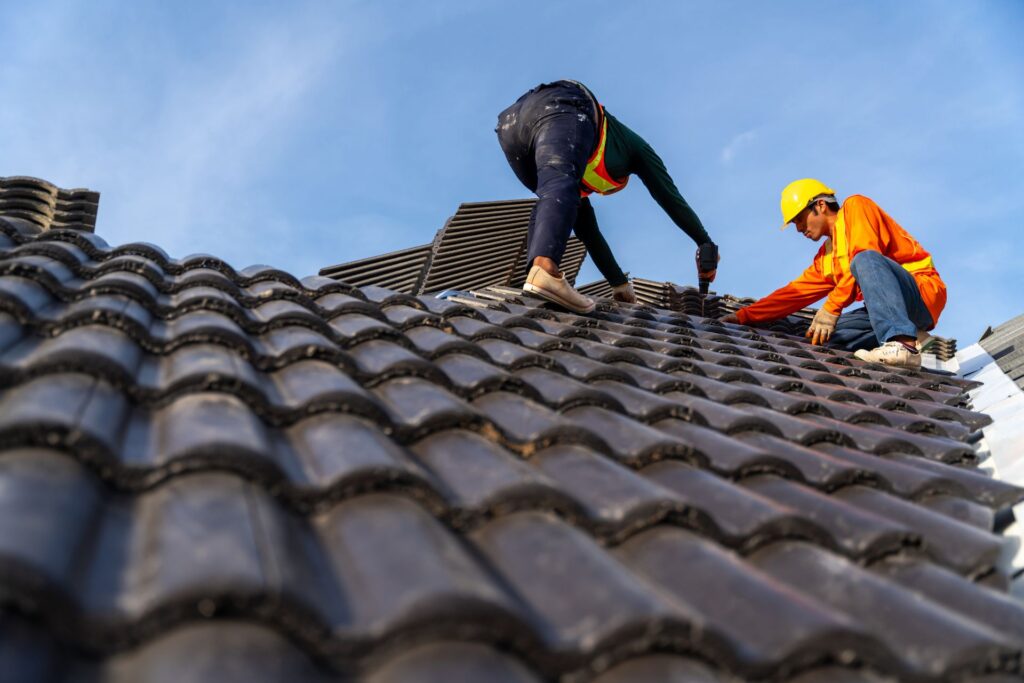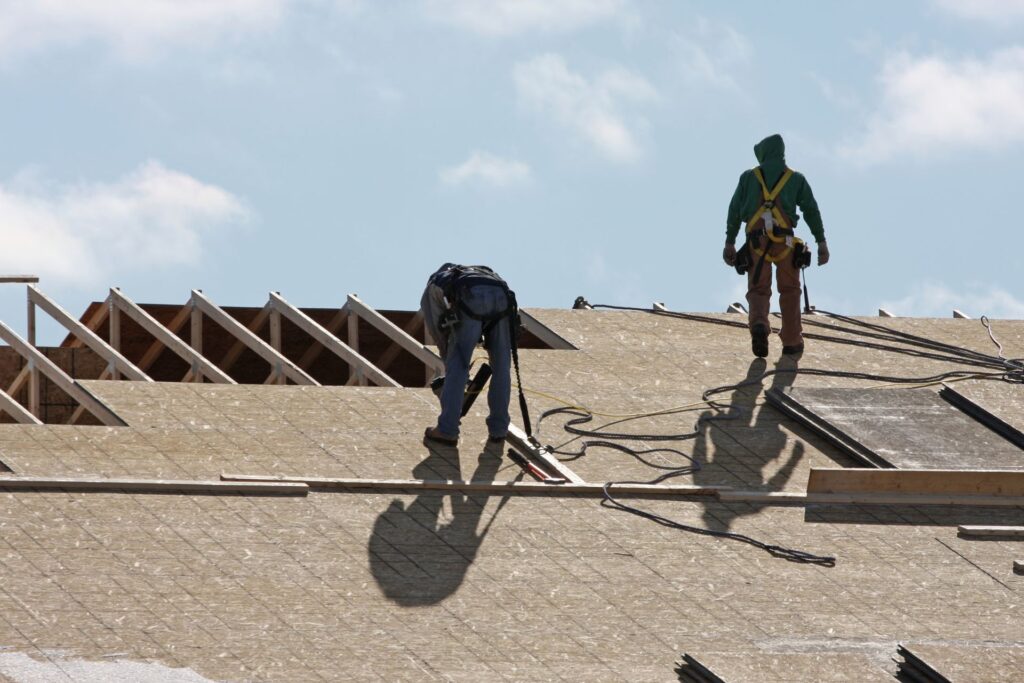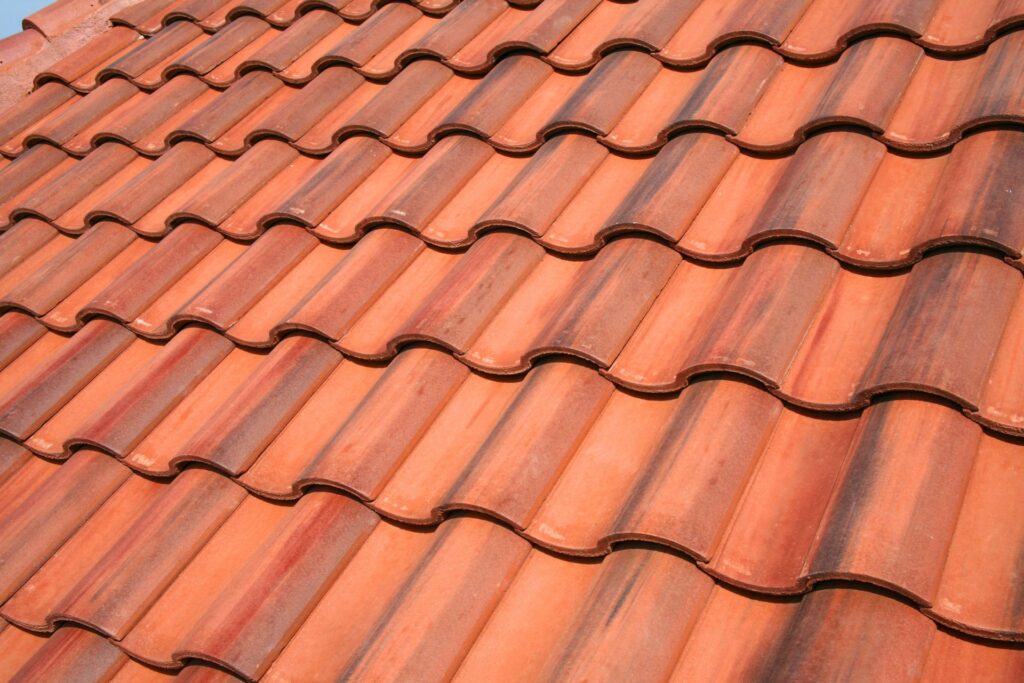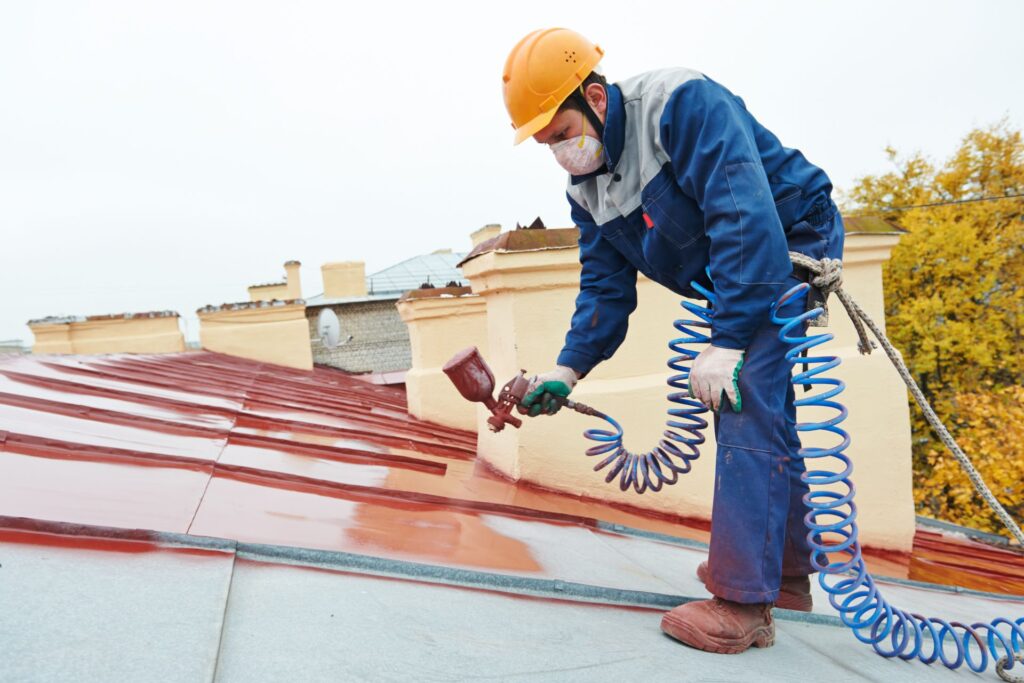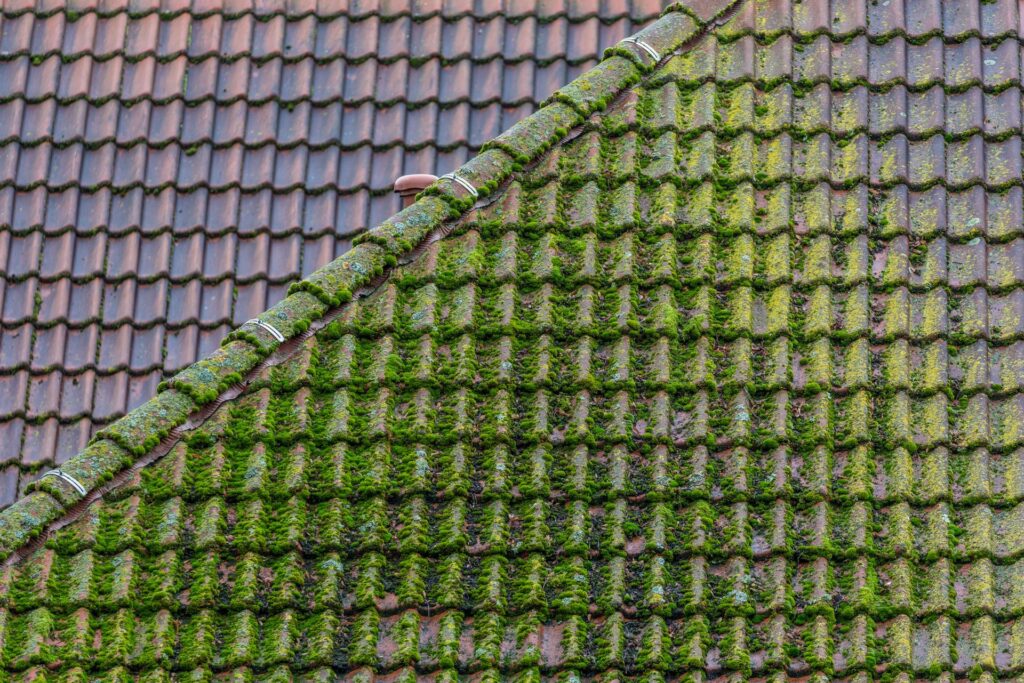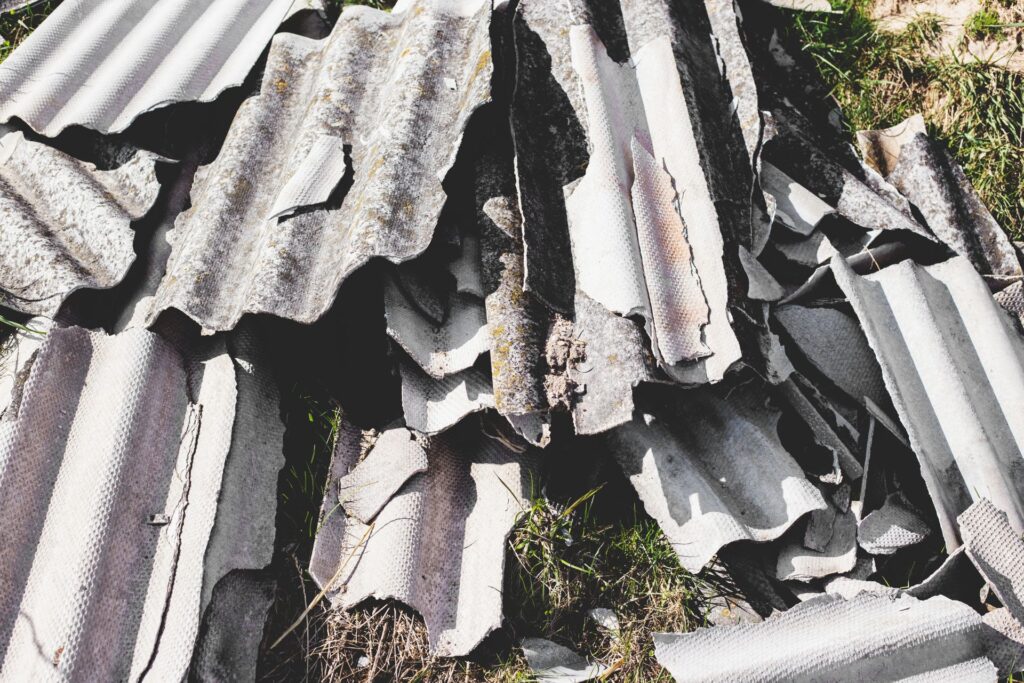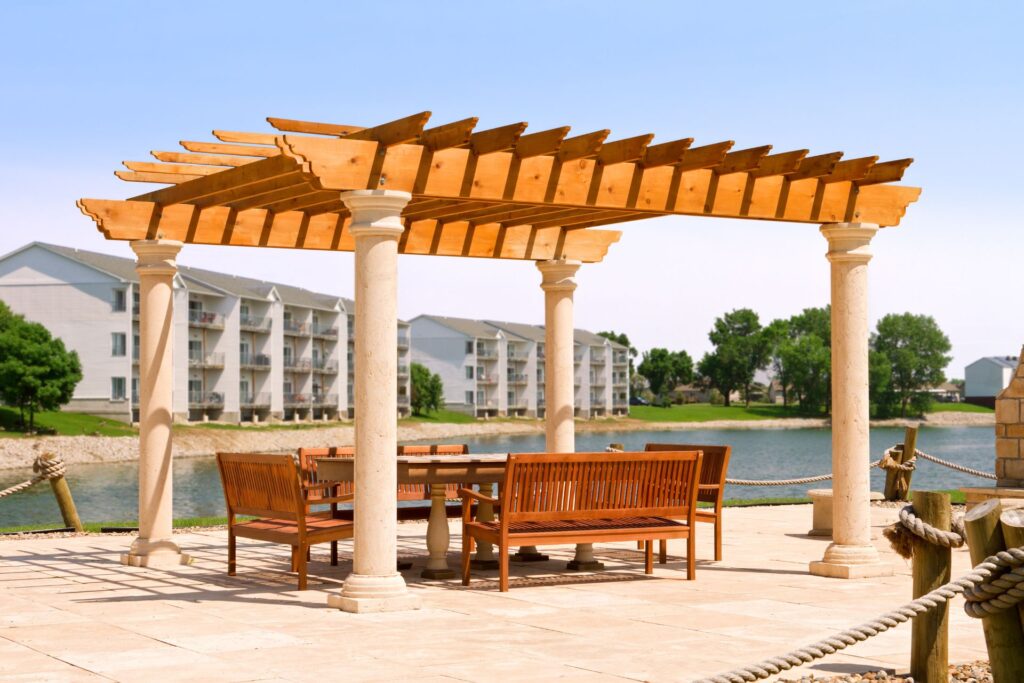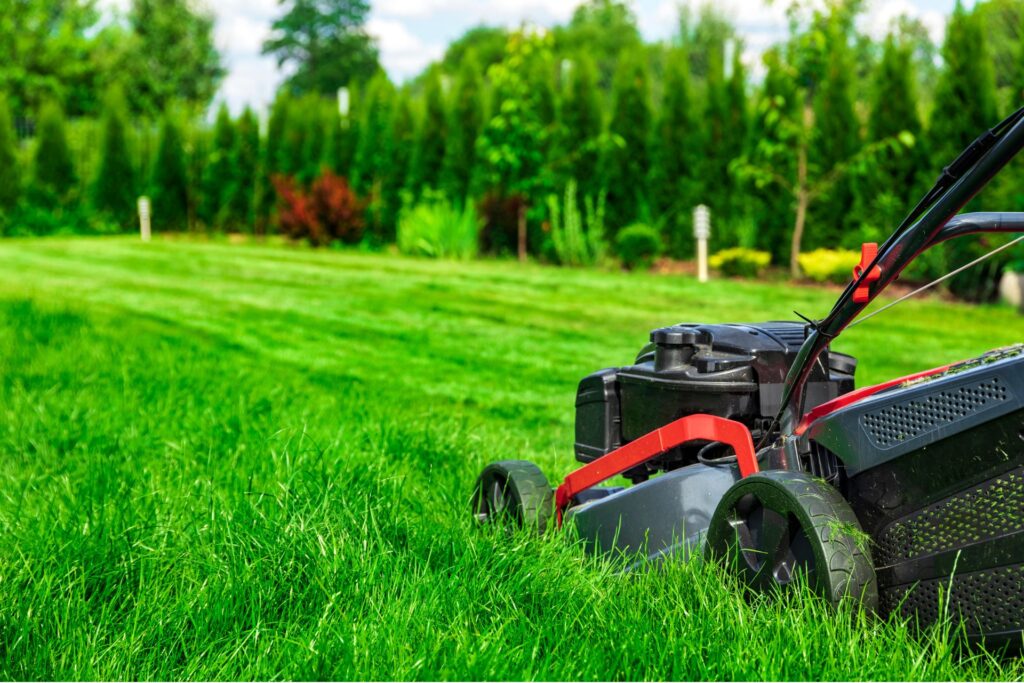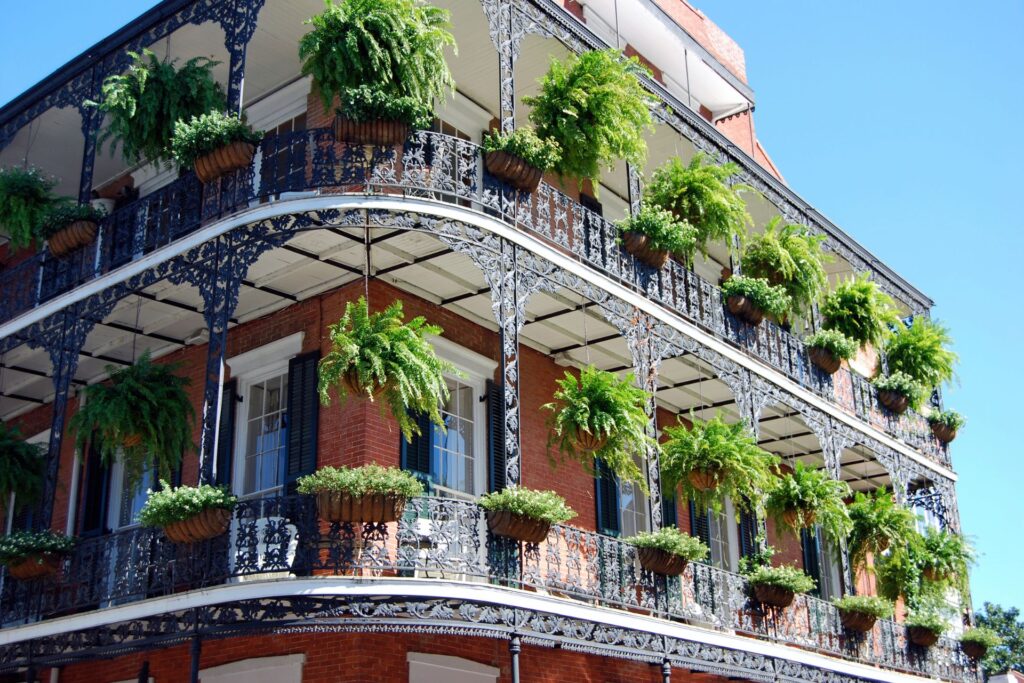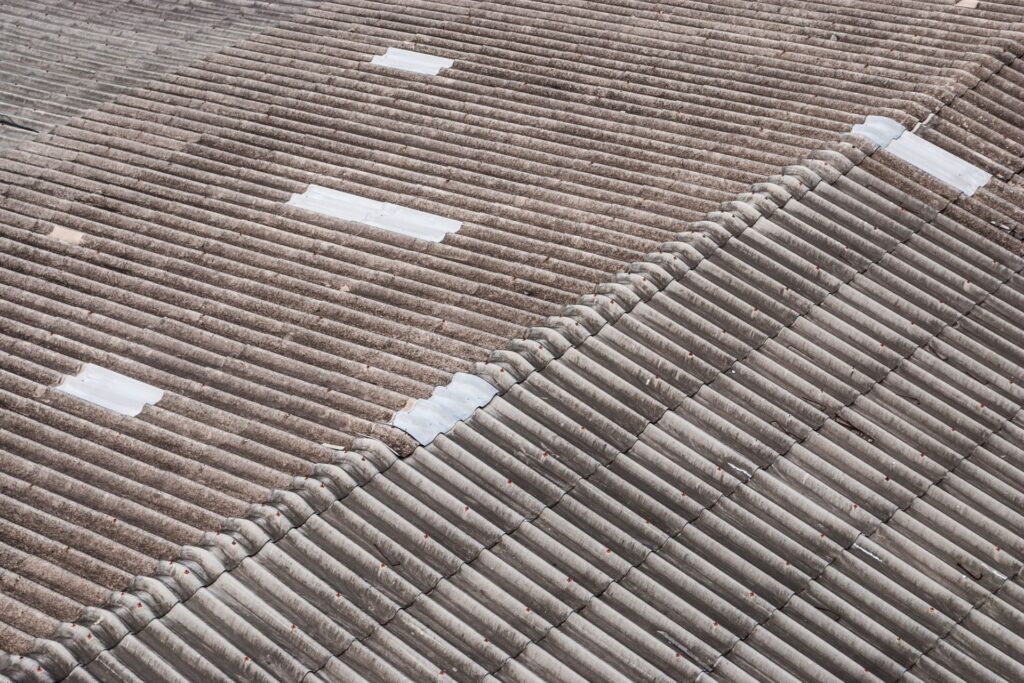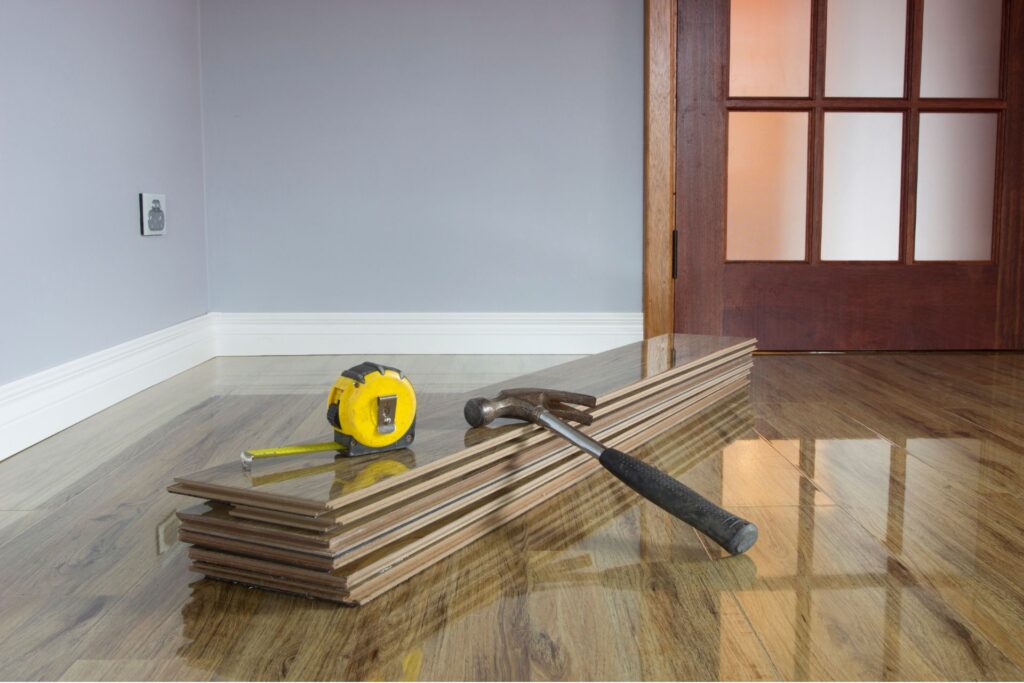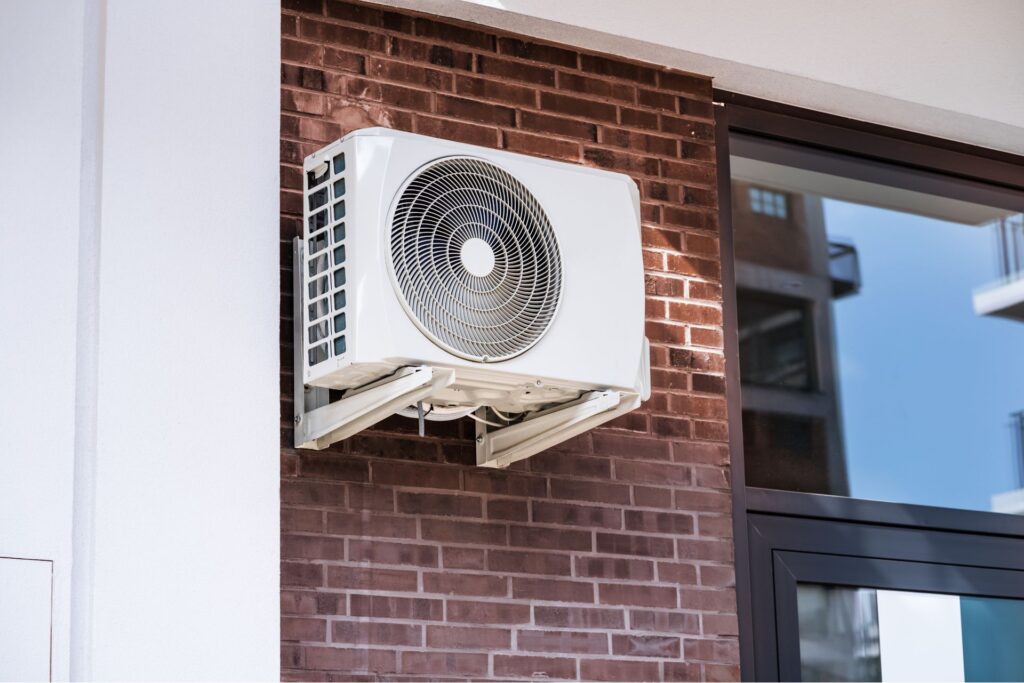Welcome to your complete guide to shingle roofing in New Zealand. Whether you’re building a new home or considering a roof upgrade, choosing the right roofing material is essential for both protection and aesthetic appeal. Shingle roofing has become a popular choice among Kiwi homeowners due to its versatility, durability, and ability to withstand New Zealand’s unique weather conditions. In this guide, we’ll walk you through everything you need to know about shingle roofing from the different types available and their benefits to installation tips, maintenance advice, and cost considerations helping you make an informed decision for your home.
Shingle roofing in New Zealand is a durable and versatile option, popular for its ability to withstand the country’s varied weather conditions. Available in materials like asphalt, wood, slate, and metal, shingle roofs offer a cost-effective solution that combines aesthetic appeal with easy installation and maintenance. Ideal for both modern and traditional homes, shingle roofing provides excellent insulation, durability, and a wide range of styles to suit any architectural design.
- What Is Shingle Roofing?
- The Benefits Of Shingle Roofing In NZ
- Choosing The Right Shingle Roofing For Your NZ Home
- Installation Process: What To Expect When Installing Shingle Roofing
- Maintenance And Care For Shingle Roofs In NZ
- Cost Of Shingle Roofing In NZ
- How Shingle Roofing Compares To Other Roofing Options In NZ
- Real-Life Case Studies: Shingle Roofing In New Zealand Homes
- Common Myths About Shingle Roofing In NZ
- Tips For Choosing A Shingle Roofing Contractor In NZ
- FAQs: About The Shingle Roofing NZ
- Conclusion
- Find A Professional Roofing Company Near You!
What Is Shingle Roofing?
Shingle roofing is one of the most popular and versatile roofing options available for residential and commercial buildings. It consists of individual overlapping elements called shingles, which are laid in rows from the bottom edge of the roof upwards. These shingles are designed to protect a structure from the elements, such as rain, wind, and sunlight while providing an aesthetically pleasing finish. Shingles can be made from various materials, each offering distinct advantages in terms of durability, cost, and appearance.
Structure of Shingle Roofing
Shingle roofing typically involves a series of flat or curved pieces that interlock or overlap to create a tight, weather-resistant seal. The structure usually includes a base layer, which acts as a foundation, and the shingles themselves. This system creates a layered defense against moisture and external elements. The durability and effectiveness of the roofing depend on the quality of the material used and the precision of the installation.
Types of Shingle Roofing
There are various types of shingles, each with unique characteristics suited to different climates, budgets, and aesthetic preferences. In New Zealand (NZ), the most common types of shingle roofing include:
Asphalt Shingles
Asphalt shingles are the most widely used type of shingle roofing in New Zealand and many other parts of the world. Made from a mixture of fiberglass or organic material, asphalt, and ceramic granules, these shingles are affordable, durable, and easy to install. Their resistance to extreme weather conditions, including UV rays and wind, makes them an ideal choice for NZ’s varied climate.
- Pros: Affordable, lightweight, easy to install, and available in a wide range of colors and styles.
- Cons: While durable, they may not last as long as higher-end options like slate or metal shingles.
Wooden Shingles
Wooden shingles, often referred to as “wood shakes,” offer a more traditional and rustic appearance. Typically made from cedar, redwood, or pine, these shingles are eco-friendly and blend seamlessly with the natural landscape, making them a great choice for homes that want to incorporate a natural, earthy aesthetic.
- Pros: Eco-friendly, visually appealing, and energy-efficient as wood provides natural insulation.
- Cons: Require regular maintenance, prone to mold and insect damage if not properly treated.
Slate Shingles
For homeowners seeking a high-end roofing solution, slate shingles are an excellent choice. Slate is a natural stone, known for its exceptional durability and timeless beauty. It’s an incredibly long-lasting option, with some slate roofs lasting over a century. Slate shingles give homes a luxurious appearance while providing unmatched resistance to weather damage.
- Pros: Extremely durable, fire-resistant, and visually appealing.
- Cons: Expensive and heavy, requiring additional structural support for installation.
Metal Shingles
Metal shingles are becoming an increasingly popular option in New Zealand due to their modern aesthetic and long-lasting properties. Made from materials like aluminum, steel, or copper, metal shingles are lightweight yet strong, providing excellent protection against harsh weather conditions such as heavy rain and strong winds. They are also resistant to rust and corrosion, which is important in coastal areas.
- Pros: Long-lasting, lightweight, low maintenance, and energy-efficient.
- Cons: Higher upfront costs compared to asphalt shingles, and can be noisier during rainstorms.
Why Shingle Roofing is Popular in NZ
Shingle roofing has gained significant popularity in New Zealand due to its ability to withstand the country’s diverse and often unpredictable weather conditions. The NZ climate varies from region to region, with areas experiencing heavy rainfall, strong winds, and high UV exposure. Shingle roofing, particularly asphalt and metal shingles, offers excellent weather resistance, making it a reliable and durable choice for Kiwi homeowners.
Additionally, the architectural styles in New Zealand often favor the clean, sleek lines that shingle roofing can provide. Whether it’s the rustic charm of wooden shingles, the modern look of metal shingles, or the classic appeal of slate, shingle roofing can complement various building styles, from traditional homes to contemporary designs. The flexibility in materials and colors allows homeowners to choose a roofing option that not only protects their home but also enhances its aesthetic appeal.
In conclusion, shingle roofing offers a blend of affordability, durability, and aesthetic flexibility, making it a top choice for many in New Zealand. With various types of shingles available, homeowners can find the perfect balance between functionality and design to suit their individual needs and preferences.

The Benefits Of Shingle Roofing In NZ
Shingle roofing has become an increasingly popular choice for homeowners across New Zealand, thanks to its wide range of benefits. Whether you’re building a new home or looking to upgrade your roof, shingles provide an excellent combination of practicality and visual appeal. Here’s a closer look at why shingle roofing is a smart option for NZ homes.
Cost-Effective Roofing Solution
One of the standout advantages of shingle roofing in New Zealand is its cost-effectiveness. Homeowners often seek a balance between quality and price, and shingles deliver just that. Compared to other roofing materials like tiles or metal, shingles are generally more affordable to purchase and install. Yet, despite their lower cost, they don’t compromise on durability. Many shingle roofing options are designed to last for decades, providing great value for your investment.
For homeowners looking to maintain a budget without sacrificing quality, shingle roofing is an ideal choice. Its affordability makes it a practical option for both new constructions and roof replacements across a range of property types in New Zealand.
Aesthetic Appeal That Complements NZ Homes
Shingle roofing offers an impressive variety of styles, colors, and textures, allowing homeowners to choose a look that perfectly matches the character of their home. Whether you prefer a traditional or modern style, there’s a shingle design to suit your needs.
In New Zealand, where architectural styles vary from classic villas to sleek contemporary designs, shingles can be customized to complement any aesthetic. The availability of different color palettes and textures also means you can create a roof that enhances your home’s curb appeal, making it stand out in the neighborhood.
Durability in New Zealand’s Diverse Climate
New Zealand’s weather can be unpredictable, with strong winds, heavy rain, and even hail in some regions. Fortunately, shingle roofing is built to withstand these varied conditions. High-quality shingles are designed to resist wind uplift, heavy rainfall, and UV exposure, which are common challenges in many parts of the country.
For coastal homes where salt air can be corrosive, or in areas with high rainfall, shingles provide a durable barrier that protects your home from the elements. Many shingle roofing products also come with warranties that reflect their longevity, giving homeowners peace of mind about their roof’s durability.
Easy Installation and Repair
Another significant benefit of shingle roofing is its ease of installation and repair. Shingle roofs are quicker to install compared to other roofing materials, which can help reduce labor costs and minimize disruption during the installation process. This is especially important for homeowners who need a new roof installed quickly due to damage or renovations.
When it comes to repairs, shingle roofing is equally convenient. If a section of the roof becomes damaged, individual shingles can be replaced without the need to overhaul the entire roof. This feature makes it an economical option for homeowners who want to avoid costly repairs in the future.
Energy Efficiency for New Zealand Homes
Energy efficiency is a crucial consideration for homeowners, particularly in New Zealand’s diverse climate zones. Certain types of shingle roofing can enhance a home’s insulation, keeping it warmer in the winter and cooler in the summer. Asphalt shingles, for example, have excellent heat-reflective properties, helping to reduce energy costs by maintaining a more stable internal temperature.
By improving your home’s insulation with energy-efficient shingles, you can not only create a more comfortable living environment but also reduce your overall energy consumption, making your home more eco-friendly.
In summary, shingle roofing offers an attractive, durable, and cost-effective solution for homes across New Zealand. Its versatility in style, combined with its ability to withstand harsh weather conditions and provide energy efficiency, makes it a smart choice for both new constructions and roof replacements. Homeowners looking for a roofing solution that combines affordability, performance, and aesthetic appeal will find shingle roofing to be an excellent option for their needs.

Choosing The Right Shingle Roofing For Your NZ Home
Selecting the best shingle roofing for your New Zealand home is a crucial decision that influences the longevity, aesthetic appeal, and environmental impact of your property. The right choice depends on various factors, including the local climate, your home’s architectural style, and your priorities concerning durability and sustainability. Let’s dive into each key aspect to ensure you’re making an informed decision.
Climate Considerations
New Zealand’s diverse climate zones mean that roofing materials must be carefully selected based on your location. Coastal regions, for instance, experience higher levels of salt exposure, which can cause faster deterioration in certain materials. Homeowners in these areas should look for shingles that are specifically designed to withstand corrosion and moisture. Asphalt or metal shingles are popular options because they are resistant to salt spray and moisture damage.
In windier zones, such as Wellington or other exposed regions, you’ll want to focus on shingles that offer superior wind resistance. Some shingle types, like architectural shingles, are thicker and designed to lock tightly, providing better protection against high winds. Be sure to check the wind rating of your chosen shingles and consult local building codes to ensure compliance with the region’s requirements.
Architectural Style
Your home’s architectural style plays a significant role in determining the most suitable shingle type. Modern homes in New Zealand often benefit from sleek, flat-profile shingles like metal or even synthetic options, which complement the clean lines and minimalist design. These materials can add a sophisticated, contemporary touch while offering practical benefits like durability and low maintenance.
For traditional or rustic homes, natural-looking materials like wood or cedar shingles may be more appropriate. These shingles can provide a classic, earthy feel that blends well with older architectural styles, from colonial to country cottages. If you’re after the authentic aesthetic appeal of wood but concerned about durability, consider composite shingles, which mimic the appearance of natural materials while offering better resistance to weather and pests.
Durability vs. Aesthetics
Balancing the need for durability with aesthetic appeal can be tricky, but it’s essential to ensure your roof is both long-lasting and visually pleasing. Asphalt shingles are a popular option because they offer a variety of colors and textures, while also being cost-effective and durable enough to last up to 30 years.
For those prioritizing a high-end appearance, slate or clay shingles provide timeless beauty and durability. These materials can last 50 years or more, making them ideal for homeowners seeking long-term value. However, they come with a higher price tag and may require more structural support due to their weight.
Metal shingles are another option to consider if durability is your top priority. They are lightweight, corrosion-resistant, and can last 40-70 years, depending on the material. Additionally, metal shingles can mimic the appearance of other roofing materials, providing versatility without compromising on style.
Sustainability and Eco-Friendliness
With increasing environmental awareness, many homeowners in New Zealand are considering the sustainability of their roofing materials. Eco-friendly shingles made from recycled materials are becoming more popular, offering a way to reduce the environmental impact of your roof. These shingles can be made from materials like recycled rubber, plastic, or even reclaimed wood, combining durability with an eco-conscious approach.
Another sustainable option is energy-efficient shingles, which reflect more sunlight and help reduce your home’s cooling needs. Cool roofing materials can contribute to lowering energy consumption, particularly during New Zealand’s hotter summer months. Metal shingles are often a great choice for those looking for energy efficiency, as they are highly reflective and recyclable at the end of their lifespan.
When choosing shingle roofing for your New Zealand home, take the time to assess all these factors: climate, architectural style, durability, and sustainability. By doing so, you can select a roofing material that not only enhances the aesthetic appeal of your home but also stands the test of time and reduces your environmental footprint.

Installation Process: What To Expect When Installing Shingle Roofing
Step-by-Step Guide
When you’re planning to install shingle roofing on your home, understanding the process can help you prepare for what to expect. Here’s a breakdown of the key steps involved in a typical shingle roofing installation:
1. Initial Consultation and Roofing Assessment
The first step is to schedule an initial consultation with a roofing contractor. During this phase, the contractor will assess the current condition of your roof, take measurements, and discuss your roofing options, such as the type of shingles, colors, and overall design preferences. This stage helps set clear expectations about the project scope and budget.
2. Removal of Old Roofing Material
Before installing the new shingles, the old roofing material must be removed. This process involves stripping away the existing shingles, underlayment, and sometimes even the plywood decking if it’s damaged. This step is critical to ensure a solid foundation for the new roof.
3. Underlayment Installation
Once the old material is removed, the next step is installing the underlayment. The underlayment acts as a protective barrier against water and other elements. It’s typically made from a felt-like material or synthetic alternatives designed to improve water resistance and insulation.
4. Shingle Placement and Sealing
After the underlayment is installed, it’s time to place the new shingles. The contractor will carefully lay them out in rows, starting from the bottom of the roof and working upwards. This technique ensures proper water runoff and minimizes the risk of leaks. Shingles are nailed into place, and sealants are applied to prevent moisture from seeping under the roofing materials.
5. Inspection and Final Adjustments
Once the shingles are installed, a thorough inspection is conducted to check for any imperfections or areas that require adjustments. This final step ensures the roof is in optimal condition, ready to protect your home for years to come.
Hiring a Professional in NZ
Roof installation is not a DIY project for the average homeowner, particularly in New Zealand’s diverse climate. Professional installation is crucial because it guarantees that the job is done correctly, safely, and up to code. Experienced roofing contractors have the necessary skills to handle the intricacies of shingle installation, from proper sealing techniques to ensuring adequate ventilation. They also have access to quality materials and tools that can extend the lifespan of your roof.
When hiring a professional roofer in New Zealand, it’s essential to research local contractors with strong reputations. Look for roofing companies that are licensed, insured, and well-reviewed by previous clients. It’s also a good idea to get multiple quotes and compare them to ensure you’re receiving fair pricing.
Timeframe for Installation
The timeframe for installing shingle roofing can vary depending on several factors, such as the size of your home, the roof’s complexity, and local weather conditions. On average, a standard-sized home may take between two to five days to complete. However, weather delays such as rain or high winds can extend the timeline. Clear communication with your contractor will help you get an accurate estimate based on your specific situation.
In conclusion, installing shingle roofing involves several detailed steps that require professional expertise to ensure long-term success. By hiring a reputable contractor and understanding the process, you can enjoy a smooth installation experience and a durable, aesthetically pleasing roof.

Maintenance And Care For Shingle Roofs In NZ
Caring for your shingle roof is essential to extending its lifespan and ensuring that it provides reliable protection for your home. New Zealand’s unique climate, characterized by heavy rainfall and strong winds, can wear down a shingle roof over time. Here’s a detailed guide to help you maintain and care for your shingle roof effectively.
Regular Inspections
Regular inspections are crucial for keeping your shingle roof in top condition. It’s recommended to inspect your roof at least twice a year, once in the spring and again in the autumn. Additionally, after any severe weather event such as storms or high winds, a quick inspection can help catch any damage early on.
When inspecting your shingle roof, you should be on the lookout for the following:
- Loose or missing shingles: These could expose the underlying structure to water damage.
- Curling or buckling shingles: This is a sign of aging or potential water retention beneath the shingles.
- Granule loss: If you notice large amounts of granules in your gutters, it could indicate that your shingles are nearing the end of their lifespan.
Catching these issues early can save you from more extensive damage and costly repairs in the long run.
Common Issues with Shingle Roofs
Shingle roofs are durable, but they aren’t immune to wear and tear. Some common problems that homeowners in New Zealand may encounter include:
- Curling shingles: Shingles may curl due to poor ventilation or extreme weather conditions, making them susceptible to wind damage.
- Cracking: As shingles age, they can crack, leading to leaks and other structural issues.
- Missing shingles: Wind or physical damage may cause shingles to come loose or fall off, leaving your roof vulnerable to water infiltration.
- Moss and algae growth: In the damp New Zealand climate, moss and algae can grow on your roof, which can lead to rot if not addressed promptly.
By understanding these common issues, you can take preventive steps to avoid more serious damage.
Cleaning and Debris Removal
Cleaning your shingle roof is essential, especially after heavy rain or strong winds, which can deposit leaves, branches, and other debris. Debris can trap moisture and lead to rot or mold growth if not removed regularly. It’s important to clear your gutters as well, as clogged gutters can cause water to back up under the shingles, leading to leaks and water damage.
To clean your roof safely:
- Use a soft brush or leaf blower to gently remove debris. Avoid pressure washing, as the force can damage the shingles.
- If moss or algae is present, a solution of water and mild detergent can be applied using a sprayer. Be sure to rinse thoroughly to avoid leaving residue that could damage the shingles over time.
Regular cleaning will help keep your shingle roof looking great and functioning effectively.
When to Repair or Replace Your Shingle Roof
Knowing when to repair or replace your shingle roof is crucial to preventing more extensive damage to your home. Here are a few signs that indicate it’s time for repairs or a complete replacement:
- Extensive shingle damage: If a large portion of your shingles are cracked, curling, or missing, it may be more cost-effective to replace the roof rather than continuously repair it.
- Leaks inside your home: Water stains on your ceiling or walls are a sure sign that your roof is no longer doing its job.
- Sagging roof deck: If the structure of your roof appears to be sagging, it’s a serious issue that likely requires immediate replacement.
- Age of the roof: Most shingle roofs last between 20 to 30 years. If your roof is approaching this age range, it might be time to start considering a replacement before problems arise.
By staying proactive about repairs and replacements, you can ensure that your roof continues to protect your home effectively for years to come.
Following these maintenance tips, you can help extend the life of your shingle roof, saving money on repairs and ensuring your home stays safe and dry in New Zealand’s varying weather conditions. Regular inspections, addressing common issues, proper cleaning, and knowing when to repair or replace are all key aspects of effective roof care.

Cost Of Shingle Roofing In NZ
When considering installing shingle roofing in New Zealand, it’s essential to understand the various costs involved. These costs are generally broken down into four key areas: material costs, installation costs, ongoing maintenance expenses, and long-term value. Let’s explore each of these in more detail to help you make an informed decision about your roofing project.
Material Costs
The first factor to consider when budgeting for a shingle roof in NZ is the cost of the materials. In New Zealand, there are different types of shingles available, each with its price range. Some of the most common materials include:
- Asphalt Shingles: Typically the most affordable option, asphalt shingles cost between $85 and $150 per square meter, depending on the brand and quality. These shingles are popular due to their durability and wide range of colors and styles.
- Wood Shingles: For a more natural aesthetic, wood shingles are a mid-range option, costing between $200 and $350 per square meter. Although they offer a unique, rustic look, wood shingles require more maintenance than other materials.
- Metal Shingles: Known for their durability and resistance to harsh weather conditions, metal shingles can range from $250 to $450 per square meter. These are a long-term investment due to their longevity.
- Slate or Clay Shingles: At the high end of the scale, slate or clay shingles can cost anywhere from $500 to $1,200 per square meter. While they are expensive upfront, they offer superior longevity and a classic, timeless look.
Installation Costs
Material costs are just one part of the equation; installation costs also play a significant role in the total expense of a shingle roof. Several factors influence installation costs in New Zealand:
- Labor Costs: Labor is a major component, typically costing between $50 and $100 per square meter, depending on the complexity of the job and the experience of the roofing contractor. It’s crucial to hire skilled professionals, as a poorly installed roof can lead to significant issues down the line.
- Roof Size: The larger the roof, the more materials and labor will be required, increasing the overall cost. A typical roof in NZ can range from 100 to 300 square meters, so be sure to factor in the size of your home when estimating costs.
- Roof Complexity: If your roof has a lot of angles, steep slopes, or other architectural features, this can complicate the installation process and drive up labor costs. Complex roofs may also require additional safety measures, further adding to the total cost.
Maintenance Costs
Once your shingle roof is installed, there are ongoing maintenance costs to consider. Regular maintenance is key to extending the life of your roof and avoiding costly repairs. Common maintenance tasks and associated costs include:
- Inspections: It’s recommended to have your roof inspected at least once a year, especially after harsh weather events. An inspection can cost between $150 and $300, depending on the size and location of your home.
- Minor Repairs: Over time, individual shingles may become damaged due to wind, rain, or other environmental factors. Repairing a few damaged shingles can cost between $300 and $1,000, depending on the extent of the damage.
- Cleaning: Moss and algae can build up on shingle roofs, particularly in damp areas. Cleaning your roof, which may need to be done every few years, typically costs between $400 and $800.
By staying on top of these maintenance tasks, you can avoid more significant repair costs down the road.
Long-Term Value
While the upfront cost of shingle roofing can be substantial, it’s important to consider the long-term value of your investment. High-quality shingle roofs offer several advantages that can save you money in the long run:
- Durability: Shingle roofing materials, especially metal or slate, are highly durable and can last between 20 to 50 years or more with proper care. Investing in a durable material may cost more initially but will reduce the need for frequent repairs or replacement.
- Low Maintenance: Compared to other roofing options, shingles generally require less maintenance, especially metal and asphalt varieties. This lowers the ongoing costs associated with maintaining your roof over the years.
- Energy Efficiency: Certain types of shingles, such as metal, can improve the energy efficiency of your home by reflecting sunlight and reducing heat absorption. This can lead to lower cooling costs in the summer, further enhancing the long-term value of your investment.
- Resale Value: A well-installed, high-quality shingle roof can significantly boost the resale value of your home. Potential buyers will appreciate the durability, aesthetic appeal, and low maintenance requirements of a shingle roof, making your property more attractive in the real estate market.
When evaluating the cost of shingle roofing in New Zealand, it’s essential to consider not just the upfront expenses but also the long-term benefits. While material and installation costs can vary based on your choice of shingles and the complexity of the project, investing in a durable, low-maintenance roofing system can save you money over time. Regular maintenance is key to prolonging the life of your roof, but the long-term value, including energy savings and increased property value, makes shingle roofing a smart choice for many homeowners in New Zealand.

How Shingle Roofing Compares To Other Roofing Options In NZ
When it comes to choosing the best roofing material for your home in New Zealand, understanding the different options available can help you make an informed decision. Shingle roofing is a popular choice, but how does it stack up against other common roofing materials like metal, tile, and asphalt roll roofing? Let’s dive into the comparisons, looking at factors like durability, cost, and aesthetics.
Shingle Roofing vs. Metal Roofing
Durability
Metal roofing is known for its exceptional durability. It can last upwards of 40 to 70 years, depending on the material. Steel and aluminum are common choices in NZ for their ability to withstand harsh weather conditions. Shingle roofing, on the other hand, typically lasts between 20 and 30 years. While shingles are durable, they may not stand up to extreme weather events as well as metal. For areas prone to heavy rain, strong winds, or even snow, metal might be the more robust option.
Aesthetics
Shingle roofs offer a classic, textured look that appeals to many homeowners, particularly for more traditional or cottage-style homes. Metal roofing, while sleek and modern, may not provide the same warmth in appearance that shingles do. However, metal roofs come in a wide variety of colors and finishes, so it can be adapted to different styles if modern aesthetics are desired.
Cost
When it comes to pricing, shingles tend to be more affordable upfront compared to metal roofing. The installation process for shingles is also less complex, leading to lower labor costs. Metal roofing, while more expensive initially, offers a better long-term return on investment due to its longer lifespan and lower maintenance costs.
Shingle Roofing vs. Tile Roofing
Longevity
Tile roofing, whether made from concrete or clay, is one of the most durable options available, often lasting 50 years or more. Shingle roofing, while still a long-lasting option, cannot match the longevity of tiles. In regions where long-term durability is key, tiles might be the better choice if the budget allows.
Style
Both shingles and tiles offer distinct aesthetic benefits. Shingles give a textured, layered look, often chosen for homes that require a traditional or rustic charm. Tile roofing, however, adds a Mediterranean or Spanish flair that can significantly enhance the visual appeal of a home. In New Zealand, tile roofs are often chosen for their stately, elegant appearance.
Cost
Tile roofing is significantly more expensive than shingle roofing. The materials are more costly, and the installation process is more labor-intensive due to the heavier weight of the tiles. Shingles are much lighter, easier to install, and come with a more budget-friendly price tag. If you are looking for a balance between aesthetics and cost, shingle roofing may be a better option for homeowners on a tighter budget.
Shingle Roofing vs. Asphalt Roll Roofing
Pros and Cons
Asphalt roll roofing is a cheaper, simpler option, often used for low-slope roofs, garages, or sheds. It’s a cost-effective solution but doesn’t offer the durability, insulation, or aesthetic value of shingle roofing. Shingle roofing is much more robust and can provide better protection against weather elements. Additionally, shingles have a far more polished and attractive appearance compared to the utilitarian look of asphalt rolls.
Durability
Shingle roofing easily outlasts asphalt roll roofing. While asphalt roll roofing may only last around 5 to 10 years, shingles can last 20 to 30 years, making them a more durable and long-lasting option for residential homes. If you’re looking for a quick, budget-friendly fix for smaller structures, asphalt roll roofing might suffice, but shingles are the superior option for homes where longevity and performance are key.
Cost
Asphalt roll roofing is the most economical choice in terms of upfront cost. However, given its shorter lifespan and lower durability, you may find yourself needing to replace it more frequently than shingles. Shingle roofing, while more expensive than asphalt rolls initially, pays off in the long run due to its extended lifespan and reduced need for frequent repairs or replacements.
In summary, shingle roofing is an excellent all-around choice for many homeowners in New Zealand, offering a good balance between cost, aesthetics, and durability. While metal, tile, and asphalt roll roofing all have their benefits, shingles provide a versatile and practical solution for most homes. When weighing your roofing options, consider factors like local weather conditions, your home’s architectural style, and your long-term maintenance plans to make the best decision for your property.

Real-Life Case Studies: Shingle Roofing In New Zealand Homes
When it comes to selecting roofing materials for New Zealand homes, shingle roofing stands out as a versatile, durable, and aesthetically pleasing option. To truly understand the advantages and potential of shingle roofing, let’s explore three real-life examples from different regions of New Zealand. These case studies illustrate how various types of shingles can meet diverse needs whether for modern urban dwellings, traditional homes, or coastal properties.
Example 1: Modern Auckland Home with Asphalt Shingles
In Auckland, where the weather can be unpredictable and homeowners often seek a balance of style and durability, one modern home opted for asphalt shingles. The owners were drawn to asphalt shingles for several reasons. First, they offer excellent weather resistance, which is essential in Auckland’s climate, where rain and strong winds can be frequent. Additionally, the homeowners appreciated the wide range of colors and textures available, which allowed them to perfectly match their roofing choice to the contemporary design of their home.
The installation process was smooth, and the result was a sleek, modern look that complemented the home’s architecture. Beyond aesthetics, asphalt shingles are known for their affordability, which was a significant factor for these homeowners. They also appreciated the low-maintenance nature of the material, ensuring that their roof would remain in excellent condition for years to come with minimal upkeep. This project exemplifies how asphalt shingles can be an ideal choice for urban environments like Auckland.
Example 2: Traditional Wellington Home with Wooden Shingles
Wellington is known for its character-filled, traditional homes, and one homeowner wanted to maintain that rustic, historic charm. They opted for wooden shingles to achieve a natural, timeless look. Wooden shingles, often made from cedar, not only provided the desired aesthetic but also offered energy efficiency benefits. Wood has natural insulating properties, helping to keep the home cooler in the summer and warmer in the winter, which is a huge plus for Wellington’s varying temperatures.
The homeowner also valued sustainability, and wooden shingles, being a renewable resource, fit well with their eco-friendly goals. The roof installation not only enhanced the rustic appeal of the house but also contributed to better energy efficiency, reducing heating and cooling costs. This case study highlights how wooden shingles can be a fantastic choice for homeowners who want to blend tradition with practicality.
Example 3: Coastal NZ Home with Metal Shingles for Durability
In coastal areas of New Zealand, such as those along the Bay of Plenty, homes face the constant challenge of salt-laden air and harsh weather conditions. One homeowner in this region opted for metal shingles, which are known for their exceptional durability and resistance to corrosion, an essential factor for homes located near the ocean. Metal shingles provide excellent protection against the elements, including wind, rain, and salt, all while offering a sleek and modern appearance.
This particular homeowner chose metal shingles not only for their weather resistance but also for their long lifespan. Metal shingles can last up to 50 years or more, making them a cost-effective solution over the long term. The added bonus is that metal shingles are energy-efficient, reflecting solar heat and helping to reduce cooling costs during the warmer months. This case study underscores the importance of choosing the right material for the unique demands of coastal living.
Visuals: Enhancing the Story with Real-Life Installations
To truly bring these case studies to life, it’s essential to include visuals photos, or videos of the homes and their shingle roofs. Images showcasing the different shingle types and how they complement the architecture of each home will provide readers with a tangible connection to the materials discussed. Videos of the installation process or testimonials from homeowners can further enhance the human element, allowing potential customers to see firsthand how these roofing solutions work in real-world applications.
These real-life examples illustrate how shingle roofing can meet the needs of New Zealand homeowners, whether they’re looking for modern aesthetics, traditional charm, or coastal durability. By choosing the right materials, homeowners can enjoy both functional and beautiful roofs that last for decades.

Common Myths About Shingle Roofing In NZ
When it comes to choosing the right roofing material in New Zealand, many homeowners gravitate toward shingle roofing due to its practicality, aesthetic value, and overall durability. However, a few misconceptions are floating around about shingle roofing that often lead to unnecessary hesitation. Let’s clear the air and debunk some of the most common myths.
Myth 1: Shingle Roofing Doesn’t Last Long in NZ’s Climate
One of the most persistent myths about shingle roofing is that it can’t withstand New Zealand’s varied climate. While it’s true that NZ experiences a wide range of weather patterns, from intense UV rays in the summer to heavy rainfall in the winter, modern shingles are designed to hold up remarkably well. High-quality asphalt shingles are made with materials that are durable and weather-resistant, specifically engineered to resist fading from UV exposure, strong winds, and water damage. Many shingles come with warranties that last anywhere from 20 to 50 years, ensuring that homeowners can trust in their investment. The key is to choose the right type of shingles and have them professionally installed, so they can perform optimally in New Zealand’s unique conditions.
Myth 2: Shingle Roofing is Too Expensive Compared to Other Options
Another misconception is that shingle roofing is overly expensive. In reality, shingle roofing is one of the most cost-effective options on the market. While the initial cost may seem comparable to or slightly higher than some alternatives, shingles provide excellent value over time. They are relatively easy to install, which can save on labor costs, and because they are long-lasting and low-maintenance, they typically have lower lifetime costs compared to other roofing materials like tiles or metal. Plus, if you choose high-quality shingles with a good warranty, you’ll save on repair and replacement costs down the line, making shingle roofing a financially smart choice for homeowners in NZ.
Myth 3: All Shingles Look the Same and Offer Little Visual Appeal
Some people think that shingles are plain or lack visual variety, but nothing could be further from the truth. Shingle roofing comes in a wide range of colors, textures, and styles, allowing homeowners to create a look that complements their home’s architecture and enhances curb appeal. Whether you prefer the classic appeal of traditional asphalt shingles or the more high-end look of architectural shingles that mimic materials like wood or slate, there’s something for everyone. Shingles are a versatile option that can suit both modern and traditional home designs, allowing homeowners in New Zealand to add a personal touch to their roof.
Myth 4: Shingle Roofing Isn’t Eco-Friendly
In today’s eco-conscious world, many homeowners are concerned about the environmental impact of their building materials. A common myth is that shingles are not environmentally friendly, but this is no longer the case. Many modern shingles are made from recyclable materials and can be recycled at the end of their lifespan. Additionally, some shingles are designed to reflect solar heat, which can improve energy efficiency and reduce the need for cooling during the summer months. This means lower energy consumption and a reduced carbon footprint, making shingles a sustainable option for your home in New Zealand. Furthermore, manufacturers have increasingly adopted eco-friendly practices in the production of roofing materials, helping to further reduce environmental impact.
While there are several myths surrounding shingle roofing, it’s important to base your decisions on facts rather than misconceptions. Shingle roofs are durable, cost-effective, visually appealing, and eco-friendly, making them a smart choice for New Zealand homeowners. By understanding the realities of what shingle roofing has to offer, you can make a more informed choice that suits your home’s needs and protects your investment for years to come.

Tips For Choosing A Shingle Roofing Contractor In NZ
Selecting the right shingle roofing contractor in New Zealand is crucial to ensuring the longevity and durability of your roof. The roofing industry can be competitive, and it’s important to choose a contractor who is experienced, reliable, and offers quality services. Below are some helpful tips to guide you through the process:
What to Look For
When choosing a roofing contractor, there are several key factors to keep in mind. These will help you assess the quality of service and the reliability of the contractor before making a final decision.
- Experience: A contractor with years of experience in shingle roofing will have the necessary skills and knowledge to handle your project efficiently. Look for contractors who have a proven track record in installing or repairing shingle roofs, particularly in the NZ climate.
- Customer Reviews: One of the best ways to gauge a contractor’s reliability is through customer feedback. Look for reviews on independent platforms such as Google, Facebook, or specialized review sites. Positive reviews often indicate satisfied clients and a contractor’s commitment to quality work.
- Certifications: Contractors who hold relevant certifications demonstrate a commitment to their craft. In New Zealand, roofing contractors may be certified by industry bodies like the Roofing Association of New Zealand (RANZ). Being a member of such an organization suggests they adhere to high standards and best practices.
- Warranties: A reputable contractor should offer warranties on both their workmanship and the roofing materials. This not only provides peace of mind but also shows that the contractor is confident in the quality of work. Be sure to check the length and coverage of the warranty before making any decisions.
Questions to Ask
Before hiring a shingle roofing contractor, it’s essential to ask a few critical questions. These will help clarify any uncertainties and ensure that both parties have a clear understanding of the project’s scope.
What materials will you use?
The quality of the materials can greatly impact the durability and appearance of your roof. Ask the contractor about the types of shingles they use and whether they recommend specific brands known for quality and longevity.
What is the estimated timeline?
A clear timeline is important for managing expectations and minimizing disruptions. Ensure that the contractor provides an estimated start and finish date, and ask what could potentially delay the project.
Are there any hidden costs?
Cost transparency is crucial. Request a detailed breakdown of all expected costs, including materials, labor, permits, and any other fees. Asking this upfront will help you avoid any unexpected expenses down the line.
Local Recommendations
Finding qualified contractors is easier when you consult local resources. New Zealand has several reputable directories and associations that list qualified and vetted roofing professionals.
- Roofing Association of New Zealand (RANZ): This organization offers a directory of certified members who meet high industry standards. Hiring a contractor listed with RANZ ensures you’re working with a professional who follows best practices and safety standards.
- Local Roofing Directories: Many local online directories provide comprehensive listings of roofing contractors in your area. Websites like Builderscrack or NoCowboys feature reviews and ratings, allowing you to make an informed decision based on past customer experiences.
- Word of Mouth: Don’t underestimate the power of personal recommendations. Ask neighbors, family, or friends if they’ve worked with a local roofing contractor and whether they were satisfied with the results.
By focusing on these essential factors, you can ensure that you’re selecting a reliable, experienced, and qualified shingle roofing contractor for your home in New Zealand. Proper due diligence will go a long way in ensuring your roof stands the test of time, safeguarding your home for years to come.

FAQs: About The Shingle Roofing NZ
Conclusion
Shingle roofing in New Zealand offers homeowners a range of benefits, including durability, affordability, and aesthetic appeal. Various types, such as asphalt, wood, and metal shingles, provide flexibility in terms of style and performance, each suited to different climates and preferences. When selecting the right shingles, it’s essential to consider factors like weather conditions, budget, and the long-term value of your investment. For the best decision, assess your home’s unique needs, consult a local roofing expert, and weigh your options based on your specific location and budget. To explore your options further or get personalized advice, reach out to a local roofing professional for a consultation.
Find A Professional Roofing Company Near You!
- Auckland Roofing Company
- Cambridge Roofing NZ
- Central Otago Roofing Services
- Hamilton Roofing Services
- Hastings Roofing Company
- Hawkes Bay Roofing Company
- Kapiti Coast Roofing Services
- Lower Hutt Roofing Services
- Napier Roofing Company
- New Plymouth Roofing Company Taranaki
- North Shore Roofing Company
- Orewa Roofing Company
- Porirua Roofing Services
- Roof Painting Company Auckland
- Roof Repairs Manukau
- Roof Repairs Takanini
- Roofers Papakura
- Roofing Company Invercargill
- Roofing Contractors Northland
- Roofing Contractors South Auckland
- Roofing Contractors Whangarei
- Roofing Palmerston North
- Roofing Waikato
- Roofing Walkworth
- Roofing Wellington
- Te Awamutu Roofing
- Upper Hutt Roofing Services
- Warkworth Roofing Company
About the Author:
Mike Veail is a recognized digital marketing expert with over 6 years of experience in helping tradespeople and small businesses thrive online. A former quantity surveyor, Mike combines deep industry knowledge with hands-on expertise in SEO and Google Ads. His marketing strategies are tailored to the specific needs of the trades sector, helping businesses increase visibility and generate more leads through proven, ethical methods.
Mike has successfully partnered with numerous companies, establishing a track record of delivering measurable results. His work has been featured across various platforms that showcase his expertise in lead generation and online marketing for the trades sector.
Learn more about Mike's experience and services at https://theleadguy.online or follow him on social media:


